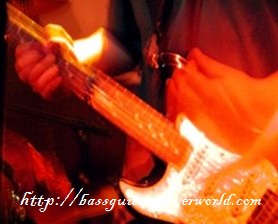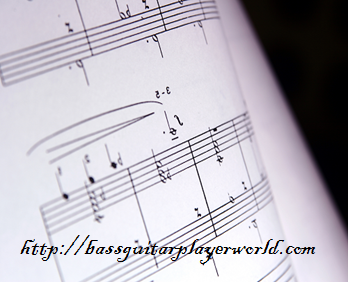Locrian Modes – Where And How the Scale Is Used
 In terms of scales, the major bass scales and the minor bass scales that we know and love are in fact new kids on the block. They haven’t been around nearly as long as most musicians think they have, and in fact there are other scales that predate them by a longshot.
In terms of scales, the major bass scales and the minor bass scales that we know and love are in fact new kids on the block. They haven’t been around nearly as long as most musicians think they have, and in fact there are other scales that predate them by a longshot.
One group of these scales go by the names of modes. Modes are all built off of one single scale, the C Major scale, and are branches of each of the C Major scale’s degrees.
This means that, all in all, there are a total of seven modes, each with its own properties and its own unique sound.
The Most Rarely Used Scale Mode
In this article, we will talk about the seventh mode, the Locrian mode on bass guitar.
Being built off of the seventh scale degree of the C Major scale, the Locrian mode already tells us a lot about itself. For example, the first note of this mode will have to be B, because B is the seventh note name in the C Major scale, and in order to be built off of the seventh scale degree of C Major, the Locrian mode must start with the same note name as the seventh scale degree.
Like the C Major scale, the Locrian mode does not contain any sharp, flats, or other types of accidental notes. This means that, for all intents and purposes, the Locrian mode is a straight throughway from the note B to the note A. And, like all other modes, the pattern of half steps and whole steps, otherwise known as half tones and whole tones, that make up this mode are unique to it and it alone.
The pattern of the whole tones and half tones that make of the Locrian mode are as follows:
Half tone, Whole tone, Whole tone, Half tone, Whole tone, Whole tone, Whole tone
This pattern of whole tones and half tones brings us from B to C (B, C), C to D (C, C#, D), D to E (D, D#, E), E to F (E, F), F to G (F, F#, G), G to A (G, G#, A), and from A back to B (A, A#, B).
This means that our Locrian mode root triad would consist of the notes B, D, F and our Locrian mode root seventh chord would consist of the notes B, D, F, and A.
Incorporating And Putting It Into Use
The best way to get a feel for this new scale is by practicing writing bass licks and riffs using it. Start off simple, just working off of the triad and the seventh chord, to get a feel for how the notes work together. Once you are a bit more familiar with the Locrian mode on bass guitar, try using it to improvise over a fitting progression.
The great thing about this mode is that, if the progression contains the note B as a chord, it can be used to play over a C Major progression. Just remember, the two are different; the Locrian mode isn’t just a rearranged version of the C Major scale, and it shouldn’t be played as such.
Have fun, and good luck!
See Huge Improvements In Your Playing Immediately
If you are serious about learning to play the bass, check out JamPlay. They offer the best online instructional content to help you achieve short term and long term goals. With lessons taught by some of the most famous bassists in the world and new content being added on a weekly basis, you can learn whatever you want at your own convenience!
Jamplay is absolutely fantastic and is highly recommended. Check them out today!
Related Articles
Comments are closed.





